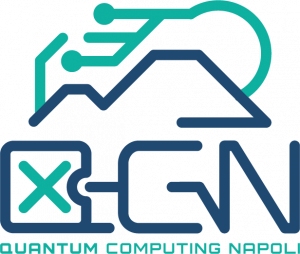Projects
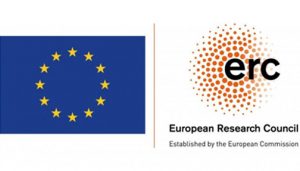
ERC – Consolidator 2023, «3DCuT» – Three dimensional Cuprate twisted heterostructure as a platform for high temperature topological superconductivity»
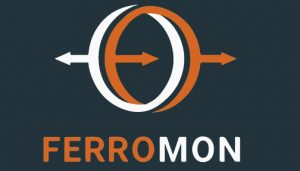
EU Horizon 2020 Pathfinder EIC 2023 “FERROMON – Ferrotransmons and Ferrogatemons for Scalable Superconducting Quantum Computers ”

EU Horizon 2020 Research and Innovation Programme, call QuantERA 2 ERANET COFUND “SuperLink – Superconducting quantum – classical linked computing systems
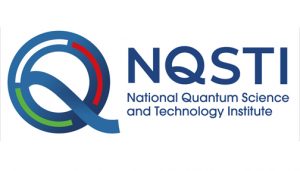
PNRR MUR project PE 0000023 – NQSTI (National Quantum Science and Technology Institute), Spoke 5
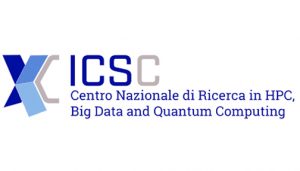 PNRR MUR project CN 00000013 – ICSC (High – Performance, Big Data and Quantum Computing National Italian Center), Spoke 10
PNRR MUR project CN 00000013 – ICSC (High – Performance, Big Data and Quantum Computing National Italian Center), Spoke 10
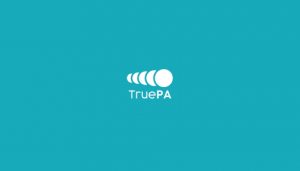 EU HORIZON Europe 2021 – 2027, RIA TruePA « Truly Resilient Quantum Limited Traveling Wave Parametric Amplifiers »
EU HORIZON Europe 2021 – 2027, RIA TruePA « Truly Resilient Quantum Limited Traveling Wave Parametric Amplifiers »
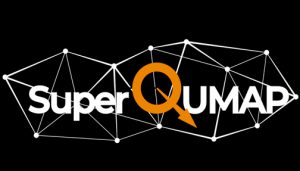 European Cooperation in Science and Technology COST SUPERQUMAP “SUPERCONDUCTING NANODEVICES AND QUANTUM MATERIALS FOR COHERENT MANIPULATION” (COST Action CA 21144): WP 2 (New functionalities for sensors and devices) – WP 3 (Building quantum systems)
European Cooperation in Science and Technology COST SUPERQUMAP “SUPERCONDUCTING NANODEVICES AND QUANTUM MATERIALS FOR COHERENT MANIPULATION” (COST Action CA 21144): WP 2 (New functionalities for sensors and devices) – WP 3 (Building quantum systems)
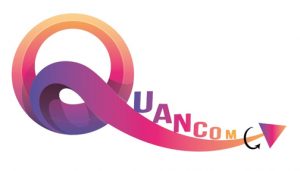 QUANCOM – ARS01_00734 “Sviluppo di sistemi e tecnologie quantistiche per la sicurezza informatica in reti di comunicazione”, Programma Operativo Nazionale “Ricerca e Innovazione” 2014-2020 – Asse II – Azione Cluster (II.2), e Piano Stralcio “Ricerca e innovazione 2015 – 2017” – Programma “Cooperazione pubblico – privato e ricerca industriale” – Linea “Ricerca Industriale nelle 12 aree di specializzazione”
QUANCOM – ARS01_00734 “Sviluppo di sistemi e tecnologie quantistiche per la sicurezza informatica in reti di comunicazione”, Programma Operativo Nazionale “Ricerca e Innovazione” 2014-2020 – Asse II – Azione Cluster (II.2), e Piano Stralcio “Ricerca e innovazione 2015 – 2017” – Programma “Cooperazione pubblico – privato e ricerca industriale” – Linea “Ricerca Industriale nelle 12 aree di specializzazione”
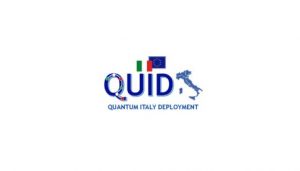 QUID – Quantum Italy Deployment, DFM.AD002.180 QUID Quantum Italy Deployment, funded by the European Commission in the Digital Europe Programme – grant agreement No 101091408
QUID – Quantum Italy Deployment, DFM.AD002.180 QUID Quantum Italy Deployment, funded by the European Commission in the Digital Europe Programme – grant agreement No 101091408
 DIT.AD016.094 Projects within the Houses of Emergent Technologies of Naples and Matera, Minister of Enterprises and Made in Italy
DIT.AD016.094 Projects within the Houses of Emergent Technologies of Naples and Matera, Minister of Enterprises and Made in Italy
ERC - Consolidator 2023, «3DCuT» – Three dimensional Cuprate twisted heterostructure as a platform for high temperature topological superconductivity»
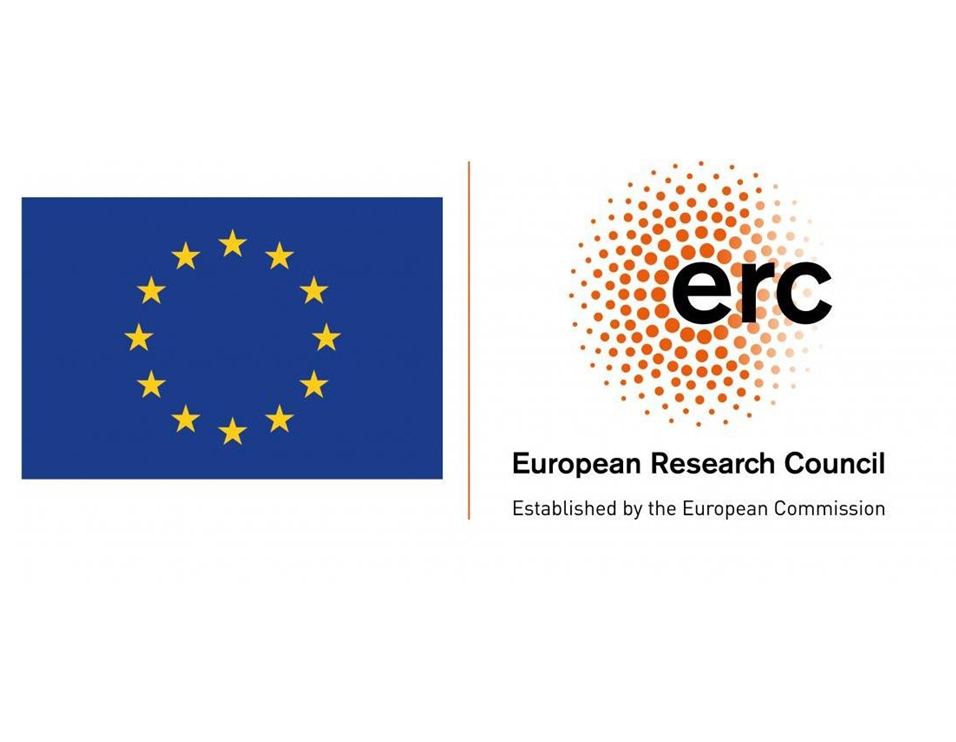
LEAD: Unina
CONSORTIUM PARTNERS: Leibniz Institute IFW Dresden
Grant agreement ID: AMD-101124606-4
2D superconductors can be used to build ultra-clean interfaces for Josephson junctions, the superconducting analog of a transistor. A small twist in the relative crystal orientation of 2D superconductors could become a new platform for topological superconductivity, an exotic state of matter that holds great promise for quantum computing at high temperatures. Based on methodological developments for the realization of twisted cuprate ultra-clean interfaces, the field is rapidly evolving, and these interfaces are now the leading candidate for the implementation of high-temperature topological superconductivity. However, the combination of well- controlled twisted cuprate heterostructures and complex circuits calls for new experimental methodologies.
3DCuT will develop micro/nanodevices and techniques to fabricate and control cuprate van der Waals twisted heterostructures in three-dimensional nanoarchitectures. At the end of this project, we will have provided a brand-new solid-state tool for emerging quantum technologies in computation, metrology, secure communication, single-photon imaging, methodologies for the entire field of 2D materials, and a comprehensive understanding of the governing principles and ingredients for topological superconductivity at high temperatures.
Start date
16 September 2024
End date
1 March 2029
EU Horizon 2020 Pathfinder EIC 2023 “FERROMON - Ferrotransmons and Ferrogatemons for Scalable Superconducting Quantum Computers ”

LEAD: Unina
CONSORTIUM PARTNERS: Quantware, Center for Quantum Devices, Niels Bohr Institute (NBI), Qblox, QuantrolOx
Grant agreement ID: 101115548
We propose alternative approaches to superconducting qubit technology. State – of – the – art implementations require flux – bias lines to tune the qubit frequency. These lines are controlled with currents which can damage qubit performance by inducing undesirable magnetic fields. This is detrimental to qubit performance and presents a severe bottleneck for scalability, as these lines are associated with significant heat dissipation. In this project, we advance two novel superconducting qubit designs capable of overcoming this challenge by eliminating the need for flux lines. This will involve the investigation of SIsFS junctions and their integration into quantum processors. One innovation track will implement SIsFS junctions in a transmon geometry — ferrotransmons . The other will hybridize gatemons and π – junction to deliver a ferrogatemon. Three of Europe’s leading quantum startups will integrate these alternative qubit types into prototype full – stack systems to test the implications of these novel approaches on scalability and performance quality. Scalable Quantum Computers Ferrotransmons and Ferrogatemons.
Website
DOI
10 . 3030 / 101115548
Start date
1 November 2023
End date
31 October 2025
EU Horizon 2020 Research and Innovation Programme, call QuantERA 2 ERANET COFUND "SuperLink - Superconducting quantum - classical linked computing systems"

LEAD: CNR - SPIN
CONSORTIUM PARTNERS: Scuola Internazionale Superiore di Studi Avanzati – SISSA; Hebrew University of Jerusalem, Quantum Machines Technologies Ltd, Chalmers University of Technology)
Grant agreement ID: 731473 and 101017733
SuperLink aims at tackling critical open problems in quantum computing with superconducting qubits. Superconducting qubits are leading candidates for scaling to disruptively useful quantum computations. However, it has become clear that scaling beyond 100 qubits will require dramatically different architectures since the scientific and engineering overheads of control and readout of these devices have become unmanageable with the approaches used so far. Our goal is to develop fundamentally new resources to facilitate the scaling up of superconducting quantum computing while reducing the number of input/output channels with novel multiplexing approaches. We will develop testbed compatible devices and interfaces which will fundamentally change the way to control and readout superconducting circuits. Integrated circuits based on superconducting single – flux quantum (SFQ) digital logic will be designed, tested, and then integrated with quantum circuits. We propose a hybrid of classical superconducting SFQ electronics, packaged and linked to quantum devices. New fundamental concepts for control and benchmarking in this linked digital – quantum hybrid system will be devised and implemented . Such novel quantum resources developed by SuperLink will represent a decisive step forward in the realization of superconducting quantum processors with a truly scalable architecture.
PNRR MUR project PE 0000023 - NQSTI (National Quantum Science and Technology Institute), Spoke 5
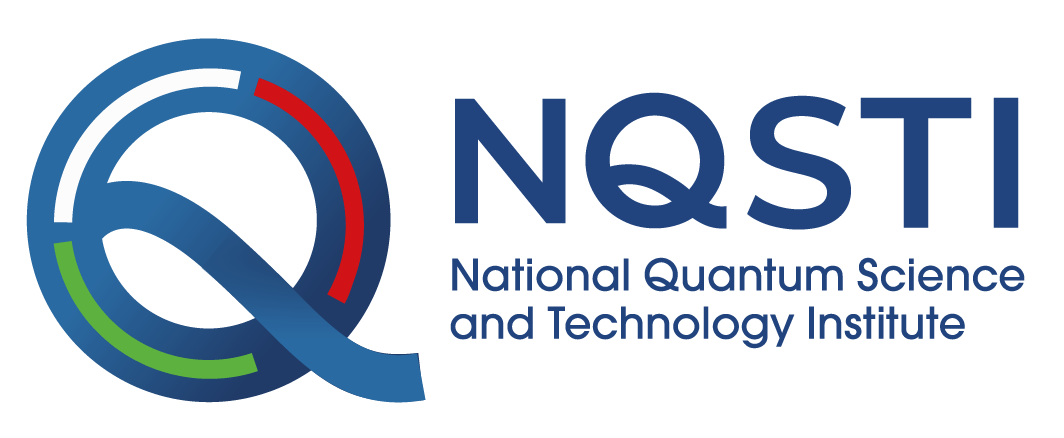
LEAD: Scuola normale superiore
CONSORTIUM PARTNERS: Click here to see all partners
NQSTI – Spoke 5 targets the creation of a coordinated network of QST fabrication facilities, a national quantum fab that contributes to NQSTI goals by the design, fabrication and characterization of solid – state systems whose shape, chemical composition and structure are tailored to host the electronic configurations of interest for QST. Electronic configurations comprise both individual electron states and emerging collective excitations (charge -, phase -, and spin – based configurations) of interest for QST in all its fields of application. This platform builds on advanced nanofabrication, materials science, and quantum – device engineering expertise to produce the physical implementation of QST building blocks, while, at the same time, pursuing their integrability within state – of – the – art optoelectronics architectures.
PNRR MUR project CN 00000013 - ICSC (High - Performance, Big Data and Quantum Computing National Italian Center), Spoke 10

LEAD: Politecnico di Milano; Università degli Studi di Padova
PARTICIPANTS: Click here to see all participants
From a technological standpoint, quantum computing has enormous potential in terms of speed and management of data. In fact, quantum calculators are capable of solving complex problems that no classic computer could ever solve in a timely manner, a potentiality known as “quantum supremacy”. However, despite rather high expectations regarding possible areas of application and new business models that may result from it, full technological maturity is still lightyears away. Overcoming certain challenges linked to the reliability of the components and to the complexity of planning – issues that are to be solved to allow the practical use of quantum calculators – is crucial. This is the main objective of Spoke 10, which will operate along three lines of inquiry: the first one includes the creation of applications that use quantum calculators as accelerators to solve otherwise unresolvable problems; the second one focuses on the development of hardware and software tools that facilitate the planning of quantum calculators and their operational compatibility with traditional calculators; the objective of the third is planning large and scalable quantum computers.
EU HORIZON Europe 2021 - 2027, RIA TruePA « Truly Resilient Quantum Limited Traveling Wave Parametric Amplifiers »
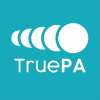
LEAD: KARLSRUHER INSTITUT FUER TECHNOLOGIE
PARTNERS: Austrian Academy of Sciences;
CNRS – Institut Néel;
CNR - SPIN;
Low - Noise Factory;
Physikalisch - Technische Bundesanstalt;
Silent Waves
The TruePA project will develop the next generation of Traveling Wave Parametric Amplifiers (TWPAs), which are key tools for quantum technologies and basic sciences involving the detection of weak electromagnetic signals in the microwave domain. TruePA aims at pushing TWPA devices beyond current limits pursuing three main ground – breaking advances: demonstration of TWPAs which are resilient to magnetic fields, quantum – noise – limited, fully nonreciprocal. Our approach integrates novel circuit designs and the use of advanced superconducting materials, combined with new characterization methods based on quantum optics techniques. The outcomes of TruePA will highly advance the field of quantum – limited amplifiers providing novel insights into decoherence mechanisms in superconducting circuits and boosting microwave amplification performance in basic science research fields such as quantum information with solid state platforms, astronomy and dark matter search. TruePA brings together internationally known researchers with complementary expertise in the field of superconducting circuits, quantum amplifiers, nanofabrication and quantum optics. This specialized knowledge is complemented by the expertise of two industry partners, to push a new generation of TWPAs to off – the – shelf components contributing to the growth of quantum technologies in Europe and at the same time pushing forward basic science research .
Website
Grant Agreement no
101080152
DOI
10.3030 / 101080152
Start date
1 Decembre 2021
End date
30 November 2025
European Cooperation in Science and Technology COST SUPERQUMAP “SUPERCONDUCTING NANODEVICES AND QUANTUM MATERIALS FOR COHERENT MANIPULATION” (COST Action CA 21144): WP 2 (New functionalities for sensors and devices) - WP 3 (Building quantum systems)

Recent years have seen a surge in superconducting quantum electronics, with rapidly rising number of promising devices and systems enabling quantum coherent manipulation and sensing. Present operating technologies use superconducting devices with a constantly increasing number and complexity of active elements. Quantum computation, for example, requires a perfect manipulation of a large number of qubits, often implemented as complex superconducting hybrid devices in arrangements manipulating quantum phase, flux or charge, among others. However, current technologies based on well – established processes face major difficulties in scaling of environment – protected superconducting qubits. Exploring novel quantum materials and phenomena is an alternative route to considerably improve superconducting devices and make a quantum leap in their stability and coherence. Addressing this goal is a huge challenge which requires going beyond presently available networks and projects.
QUANCOM – ARS01_00734 “Sviluppo di sistemi e tecnologie quantistiche per la sicurezza informatica in reti di comunicazione”, Programma Operativo Nazionale “Ricerca e Innovazione” 2014-2020 – Asse II – Azione Cluster (II.2), e Piano Stralcio “Ricerca e innovazione 2015 - 2017” – Programma “Cooperazione pubblico – privato e ricerca industriale” – Linea “Ricerca Industriale nelle 12 aree di specializzazione”
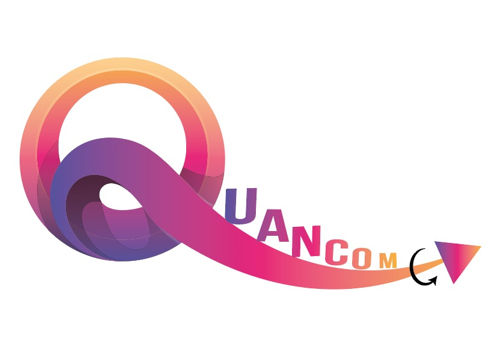
Website
Start date
1 March 2021
QUID – Quantum Italy Deployment, DFM.AD002.180 QUID Quantum Italy Deployment, funded by the European Commission in the Digital Europe Programme - grant agreement No 101091408

Start date
1 January 2023
End date
30 June 2025
DIT.AD016.094 Projects within the Houses of Emergent Technologies of Naples and Matera, Minister of Enterprises and Made in Italy

Start date
4 August 2020
Project PRIN 2022
Project PRIN2022: Advanced Control and Readout of Scalable Superconducting NISQ Architectures (SuperNISQ)
– Leader: Unina
– Partners: Università di Catania e CNR-SPIN
– start date: 29 september 2023
– end date: 28 september 2025
SuperNISQ will make a step toward an integrated scalable package, where a quantum processor unit (QPU) is combined with cold signal generation, active single flux quantum (SFQ) electronics in a proof of concept. This will contribute to addressing one of the main challenges for solid-state quantum technology: scaling up superconducting quantum computing by multiplexing a large number of devices and reducing the input/output channels.
We will develop an SFQ based quantum architecture designed to convert the delicate quantum state of an array of qubits to a classical digital format with the lowest possible latency. In addition, two key challenges in qubits readout protocols will be addressed: minimization of qubit backaction and low-noise qubit readout. Specifically, an SFQ-driven readout protocol based on a Josephson Digital Phase Detector will be developed: the qubit state will be determined by sensing the phase shift of a dressed readout tone that can be mapped into a digital SFQ signal, enhancing the measurement speed up and reducing qubit backaction. To minimize the readout noise and work in the quantum-noise-limit regime, superconducting Traveling Wave Parametric Amplifiers will be adopted and their operation investigated in conjunction with SFQ electronics.
Start date
29 September 2023
End date
28 September 2025
Our past projects
SQUAD — On - chip control and advanced read - out for superconducting qubit arrays
SFQ4QPU
On-chip signal generation for superconducting Quantum Processors.
Call EUROSTARS_2 E! 115636.

